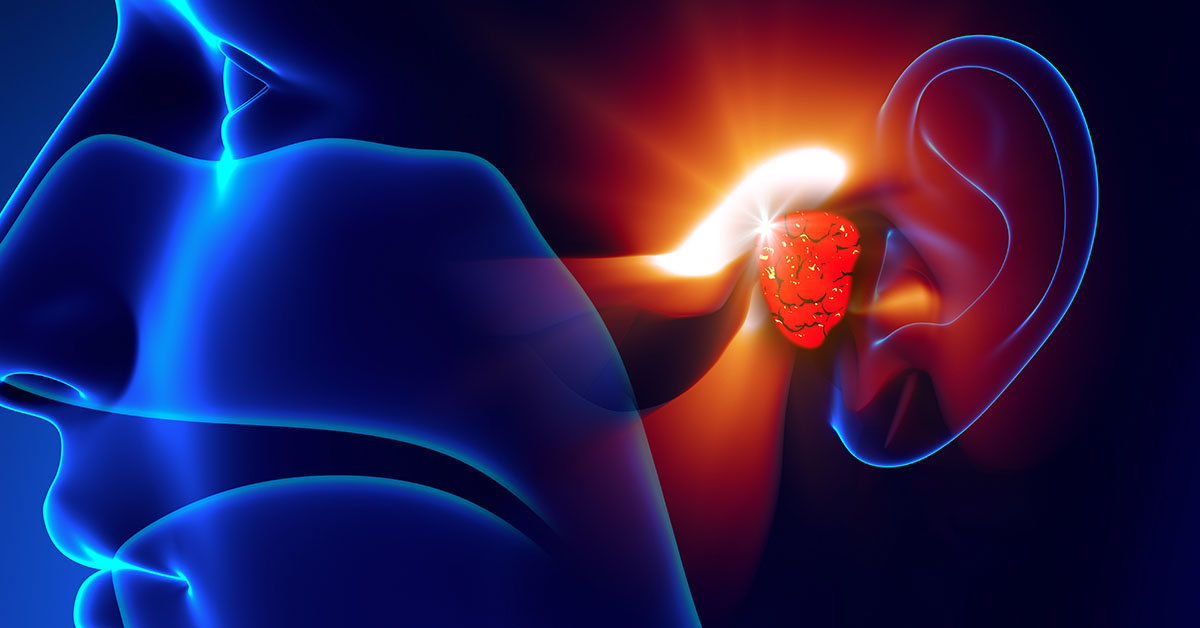
Adenoids: What Are They?
Adenoids (also known as the pharyngeal tonsils) are located behind the uvula, the soft palate that dangles in the back of the throat, and near where the nasal passages enter. Like the tonsils, adenoids are part of the immune system. Both help to alert your body’s natural defenses to the presence of bacteria and viruses that can cause infections.
Typically, the adenoids are very small at birth. They grow larger in babies between 18 and 24 months old, and stop growing between the ages of three and seven years. Adenoids can sometimes be enlarged in children of that age range, even without the presence of infection. In children and in adults, the adenoids can swell from viral or bacterial infection, and the tissue can remain swollen for months or years after the infection subsides. In some children, repeated infections can also affect the tonsils and the ears.
Diagnosing Enlarged Adenoids
Children and adults who have repeated or persistent swelling (also known as adenoid hypertrophy) with or without accompanying infection should see a doctor. The doctor will most likely use a mirror to examine the adenoids, and may take a culture from the throat to test for strep or other infection. Patients will be asked about their medical history, about any recurrent tonsillitis or adenoid infections, and about such diagnostic indicators of enlarged adenoids as:
- Obstructed nasal passages that cause breathing through the mouth
- Voice quality affected by ‘stuffy nose’ sounds
- Runny nose, in the absence of cold or allergy
- Loud breathing when awake
- Persistent snoring when asleep
Treating Enlarged Adenoids
Usually doctors treat bacterial infections of the adenoids, especially those caused by streptococcus, with antibiotics. Removal of the adenoids (adenoidectomy) may be recommended for patients who have recurrent infections despite antibiotic therapy, or for those whose enlarged tonsils and adenoids cause difficulty breathing. Obstructed breathing (sometimes known as OSA – Obstructive Sleep Apnea) causes snoring and disturbed sleep that leads to daytime sleepiness; fatigue may trigger behavioral or school performance problems in some children. Studies indicate that removal of the adenoids may help some children with chronic earaches accompanied by fluid in the middle ear (otitis media with effusion). With some 90% of adenoidectomies performed on children of age 15 and under, it is unusual – but not unheard-of – for adults to require surgical removal of the adenoids. Adenoidectomy can be performed as an outpatient procedure using a sharp knife (a curette, in medical language), or using a hot electrode instrument (electrocautery) or via coblation, using radio waves to separate the adenoid from the surrounding tissue.
After Adenoidectomy: Recovery and Prognosis
Patients can expect to be go home once anesthesia wears off, and any packing to stanch bleeding is removed. The medical staff will make sure breathing, coughing and swallowing are unimpeded, and will give recommendations on the most appropriate pain relievers. Complete recovery for most patients will take one to two weeks. The long term outlook for most patients is easier breathing through the nose, fewer and less severe sore throats, and fewer ear infections.
References:
Tonsils and Adenoids: American Academy of Otolaryngology.
http://www.entnet.org/content/tonsils-and-adenoids
https://www.merckmanuals.com/home/children-s-health-issues/ear,-nose,-and-throat-disorders-in-children/enlarged-tonsils-and-adenoids
http://kidshealth.org/en/parents/tonsil.html
http://kidshealth.org/en/parents/adenoids.html
Diagnostic criteria for obstructive sleep apnea syndrome
http://www.ncbi.nlm.nih.gov/pubmed/26968302
Clinical practice guideline: tonsillectomy in children
http://www.ncbi.nlm.nih.gov/pubmed/21493257
MedlinePlus: Enlarged Adenoids
https://medlineplus.gov/ency/article/001649.htm
MedlinePlus: Adenoid Removal
https://medlineplus.gov/ency/article/003011.htm
